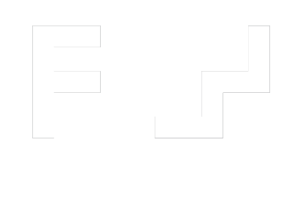Gene Coleman has been developing a series of works around concepts of Neuro Music and Transcultural Music, some of which are collected for the first time on Exploratorium, which is also the first album exclusively dedicated to Gene’s compositions. The CD booklet includes the following Introduction by Gene, as well as notes on each of the compositions.

Ideas about exploratory behavior, Neuro Music and Transcultural Music have been the basis for many of my works over the last 20 years. Exploratorium is an album of some of those works and a space of exploration. Indeed, all the works on this album are examples of Neuro Music, which is the fundamental connection point across these compositions.
I define Neuro Music as an area of research and creation based on the study and application of models and concepts from Auditory Neuroscience, as a form of musical composition. For me the big question is: how can we apply ideas and data from Auditory Neuroscience to create new works of art?
My definition of Neuro Music is also shaped by the growing field of Neuroaesthetics, which is a branch of Cognitive Neuroscience that studies aesthetic behaviors, such as the definitions of and responses to beauty. In my lecture ‘Music Mirrors Mind’ I examine the concepts of Neuroaesthetics and Neuro Music, along with related work in these areas by Stan Brakhage, Anthony Braxton, Helmut Lachenmann and Alvin Lucier.
‘Atonal Music as a Model for Investigating Exploratory Behavior’, a paper by a group of neuroscientists, was published in 2022. The paper’s research into ideas of listeners’ exploratory behavior as a neurological activity opens up new ways to think about creativity, both for the composer’s work and how music is heard and processed by listeners. Is it possible to understand an impulse to create things that don’t fit known compositional categories or strategies? There is no clear answer to that yet, but I have a desire to explore new lands in music, I don’t want to travel where most composers go. The possibilities for Neuroscience to deepen our understanding of sound and music, as well as the behaviors of listeners, are extraordinary. Applying these ideas from Neuroscience has profoundly transformed the way I think about and create music.
My interest in Neuroscience and music began around 10 years ago and found an early form in my work for solo cello The Geometry of Thinking (2016). That work contained experiments with what I call Geometric Bowing, a technique of moving the bow on the strings in geometric patterns (rather than the normal back and forth) to represent auditory information processing in the brain. Another technique is called Synapse Bowing, which involves moving the bow vertically on the strings, following patterns of electrical flow between Neurons, as presented by the Neuroscientist Eugene M. Izhikevich in his book Dynamical Systems in Neuroscience. Geometric and Synapse Bowing are on full display in the first work on this album, RITORNO (2019), which is my 2nd string quartet.

The Neuro compositional methods I have developed are modeled on the auditory pathway of the brain (APB). It is my belief that constructing musical compositions based on the APB will allow new forms of musical thought and expression to emerge. Technically speaking, the auditory pathway is the entire chain of events that occur in our auditory experience, from sound waves striking the Pina (outer ear) to the mechanical conversion of air waves to water waves, then to impulses in the auditory nerve, then onward to various stages of cognition, memory, emotion and thinking. This is a vast territory, and in some works I have found it interesting to focus on a particular portion of the APB as the model for the composition. Such is the case with Kokhlos I and Kokhlos IV, which use the inner ear (the Cochlea) as the model for the entire piece. These works (along with Vidrone) use texts by Lance Olsen, who wrote a novel called Dreamlives of Debris that rewrites the mythology of the labyrinth in Crete. ‘Kokhlos’ is the Greek word for ‘spiral shell’, from which the term Cochlea originates. I compare the labyrinth to the Cochlea, the winding, spiral organ that converts sound waves to electrochemical signals.
I am in awe of the ways in which music and brain functions are so similar. I have studied the way the brain processes sound and worked to develop and define related compositional models and refine existing ones. The creative process of designing these models and using them to create music is an amazing odyssey. My models of the auditory pathway merge with my intuition (the subconscious); for many years I have explored the conscious and subconscious in music, though I didn’t define it like that until recently.
Another concept behind some of my works is what I call Transcultural Music, which I define as an area of research and composition based on the integration of music from different cultures and traditions. In my works the emphasis is often on timbre (sound color) and noise to control or dissolve boundaries between different forms of music. In 2003, the Transonic festival was initiated at the Haus der Kulturen der Welt (the House of World Cultures) in Berlin. I was very fortunate to be asked by the HKW Director Hans-Georg Knopp to act as the artistic director and composer in residence for this festival. It was an unprecedented opportunity to explore how musical styles and traditions might meet and combine in new ways. This experience, along with my 9-month residence in Japan in 2001, created the conditions for my Transcultural compositions, which have involved collaborations with musicians from Japan, Taiwan, Lebanon, Brazil, China, Europe and North America. The compositions Vidrone (2017) and Across Time (Transonic Symphony #1) (2023) are examples on this album.
Across Time also introduces a new series of works called The Transonic Symphonies. Using highly unique formations of instruments and media, along with my models of Neuro and Transcultural Musics, these works explore new possibilities for what a symphony can be in the 21st century. My main vehicle for the performance of these symphonies is the Transonic Orchestra, a group I started in 2019, which features musicians from many different places and traditions.
This new symphonic approach redefines some concepts of diversity, as it’s not about placing people into existing western hierarchies, like orchestras in the USA and Europe. This form of symphonic music goes deep into different cultures, exploring many traditions, sound and media, using a wide range of instruments from different cultures combined with electronic sounds to create a symphonic, Neuro Music experience.
One aspect of this new kind of symphony involves separately recording individual musicians and using modern popular music and video techniques to mix them together. While in classical, contemporary and jazz music the norm is to record everyone together and capture the sound made by the musicians in real time, to go into new realms it is necessary to move beyond this way of working, especially regarding large ensemble music, where the logistics and economics make many new ideas impossible to realize. I fully intend to present these works live in concert, but these recording and mixing approaches are central to the ideas around Transcultural Music. The ways in which virtual representations and live performers are combined in live concerts is another possibility, as well as electronic media versions for broadcast, etc.
The current politics and economics of the orchestra stifles creativity. Composers fight for small commissions and have very little support to compete with the museum culture of classical music. The composers selected are very limited by what they can compose, which is detrimental for creativity.
In 2023 I launched the Institute for Music and Neuroaesthetics, with headquarters in Bellano, Italy. The work of the Institute will explore the research and creation of Neuro Music and Transcultural Music projects and be a valuable platform for advocacy and support. My goal is to build new pathways to a different, more creative future.


